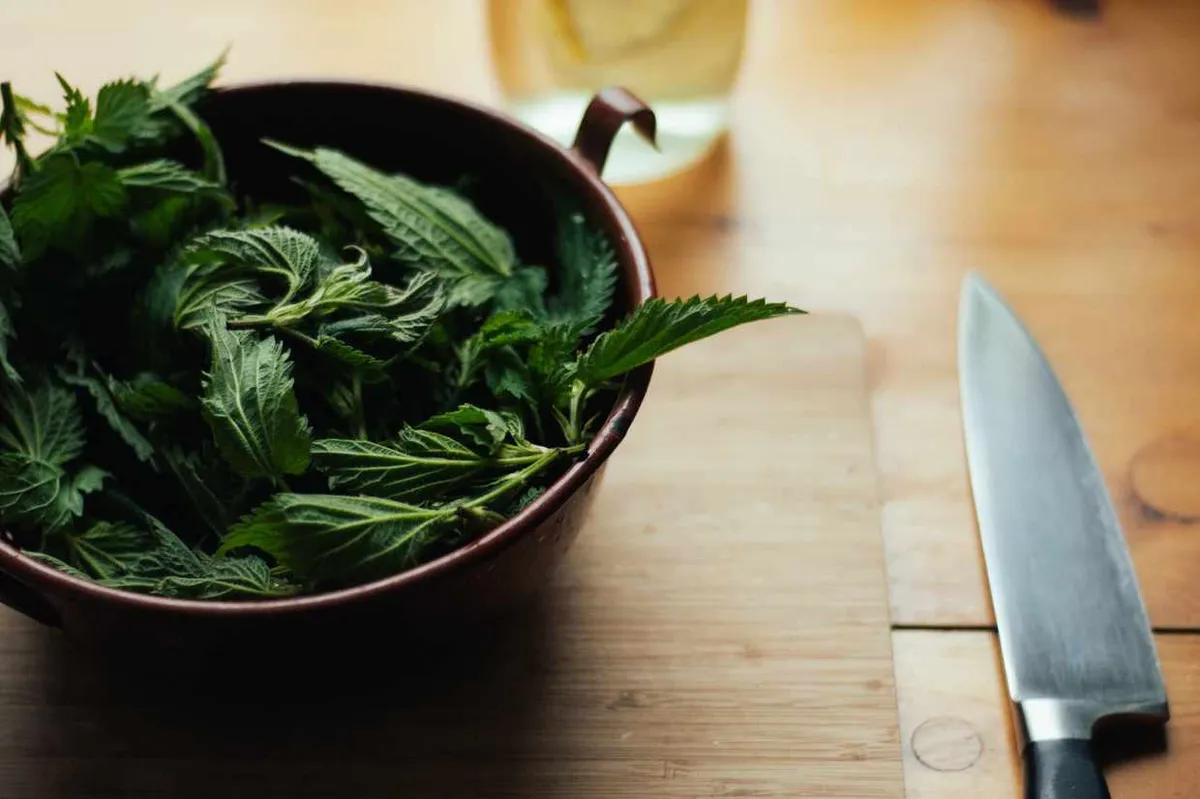Stinging nettles are more than just needled irritants: in Cornwall, they make a delicious cheese using them, the Nepalese make nettle curries and the plant can even be used to make clothing. Nettles in the UK are often known as common nettle, stinging nettle or leaf nettle.
Here is our guide on how to forage for nettles in Britain, including where to find them and how to identify them, and some exciting recipe ideas, plus how to pick and cook nettles without getting stung.
When is the best time to forage for nettles?
Nettles are best eaten when the leaves are young and tender, so pick the fresh young tips of the plants in early to mid spring when they're at their seasonal best. You can also pick them later in the season when they’re growing well, but before they flower.
Why do nettles sting?
The British nettle carries its stinging barbs on the stem and the underside of the leaf for protection from animals that might eat or uproot it.
Native British stinging nettles inject a cocktail of formic acid, histamine, acetylcholine and serotonin, and that is what causes the bobbly swelling and itchy skin we suffer when we brush up against it.
However, that is nothing compared to the effects some nettle species have at their disposal. On the island of Timor in south east Asia, one species of nettle causes lockjaw and a painful burning sensation, both of which can last for days or weeks.
Elsewhere, a native species on the Indonesian island of Java produces similar, but more potent results that can last for months and have even caused the death of some victims.

Where does the word nettle comes from?
The Latin for the nettle plant is dioica. It means ‘two houses’ and is a reference to the fact that the male and female flowers are carried on separate plants. It has been suggested that the term 'nettle' is derived from the Old English for needle – a reference to the stinging leaves.
How to pick stinging nettles safely
Fancy an easy foraging adventure? Nettles may not be the first thing you'd plan for dinner, but these prickly plants are surprisingly tasty when cooked, and have a long history as a foodstuff. Native Americans would harvest the young plant in spring, and nettle cordial can be traced back to the Romans. Stinging nettles taste similar to spinach and are very good for you; they have an unusually high protein content for a vegetable and are rich in vitamins A, C, D, iron, potassium and calcium.
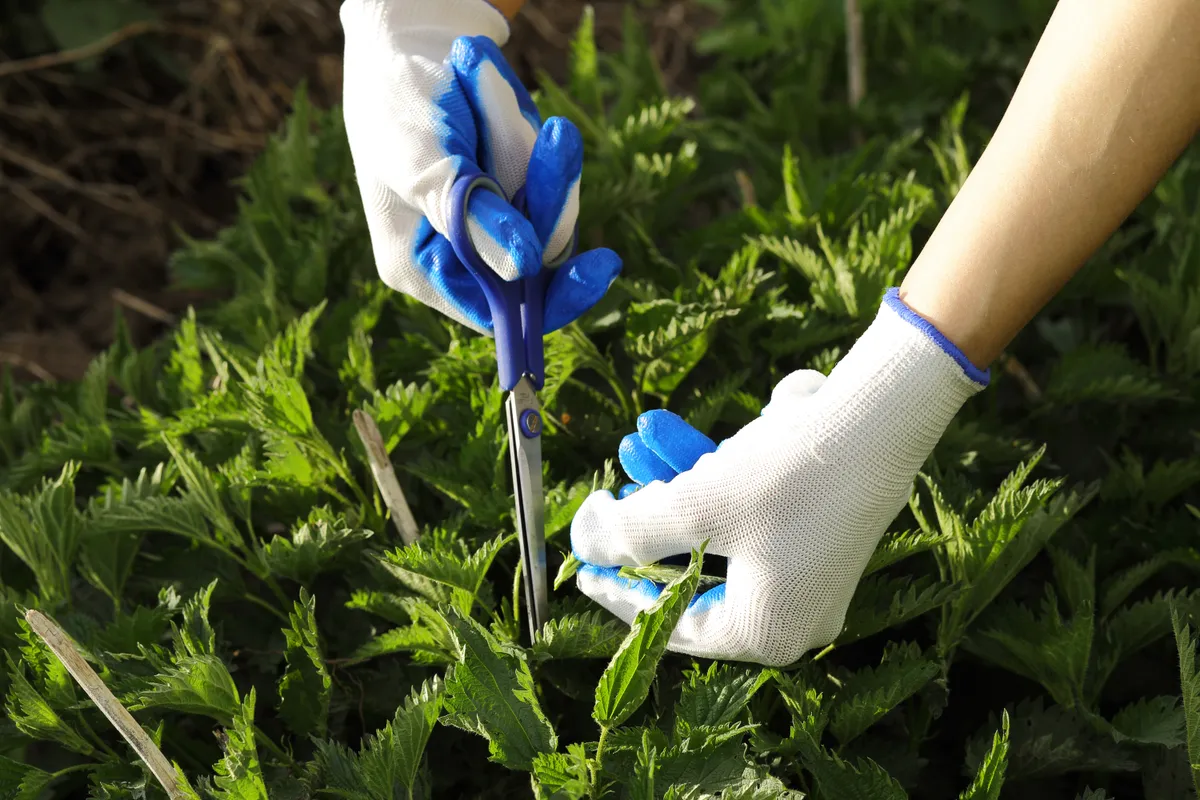
Nettles grow in abundance everywhere in the UK and are easily recognisable. Use rubber gloves or pinch the leaves hard, so you don’t get stung. Pick the young leaves from the tips.
Lay the nettles out on a tray to wilt or wash them in hot water. Once wilted they can no longer sting you. The sting relies on erect hairs to penetrate the skin and inject the stinging formic acid. When wilted, strip the leaves off the tough stems.
Always cook nettles to destroy the stinging acid. Nettles are not suitable for raw salads! Collect the biggest leaves, then wash them in very hot water, neutralising the stinging chemicals and making them safe to eat.
How do nettles benefit wildlife?
A range of butterfly caterpillars are particularly fond of nettles, including red admirals, painted ladies, peacocks, small tortoiseshells and commas. With butterflies on the decline generally, the plants provide an important food source for these pretty insects. They in turn help to pollinate our garden flowers and crops.
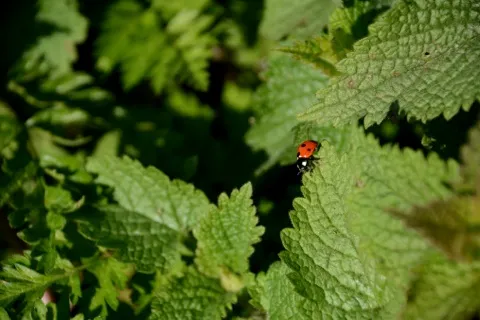
While many green-fingered folk see nettles as nothing more than weeds, they can actually provide gardeners with a vital tool to protect their plants.
Young ladybirds live on nettles as they grow and develop, using their foliage to hide from predators. When the ladybirds reach maturity, they venture further into the garden to eat the aphids that suck the sap from young plant growth. If you’re not keen on nettles running wild in your flowerbeds, why not create a ‘wildlife corner’, perhaps behind the shed in your garden or by the compost heap if you have an allotment? Leave it untended and help attract these beautiful and useful insects.
What are the health benefits of stinging nettles?
Nettles are packed with nutrients. High in vitamin C, vitamin A, and full of calcium, magnesium, iron and potassium; they are also a good source of protein. Like spinach, when cooked, nettles reduce to about a quarter of their fresh amount when cooked, so a carrier-bag-full will yield about 500g/1lb when cooked.
Boiling nettle leaves into a tea is a popular way to extract their subtle flavour and get rid of the sting at the same time. They have an earthy, wholesome flavour similar to spinach and other greens.
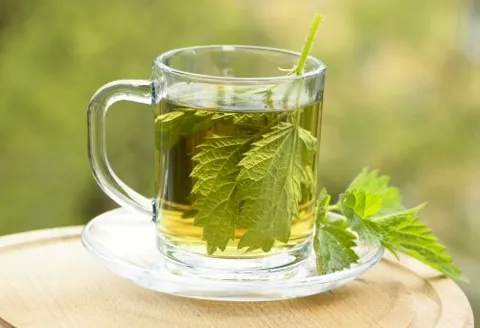
Nettles are used to coat Cornwall’s delicious Yarg cheese, and in Northumberland the leaves are ground and sprinkled into the cheese during production by one cheese-maker. Horse breeders have long fed nettles to horses to help provide a sleek coat, and in Sweden nettles are grown by farmers, dried out (causing them to lose their sting) and fed to dairy cattle, as the plant increases milk production.
Nettles have traditionally been used for medicinal purposes by many cultures. Native Americans used the fresh leaves to treat aches and pains. European herbalists used the leaves in a similar fashion to treat gout and arthritis. Also, when the plant is dried to neutralise the acid in the sting, the leaves become a natural antihistamine. Some of these uses are now being scientifically tested, with some surprising results.
How to make plant feed from nettles
Like comfrey, nettles make perfect liquid plant food. Fill a bucket with nettles and top with water. Within 10 days you'll have a thick dark brown liquid – rich in nitrogen and smelling like a heap of manure. Diluted with water (10 parts water to 1 part nettle juice) it makes a fantastic fertiliser, but be warned, it stinks!
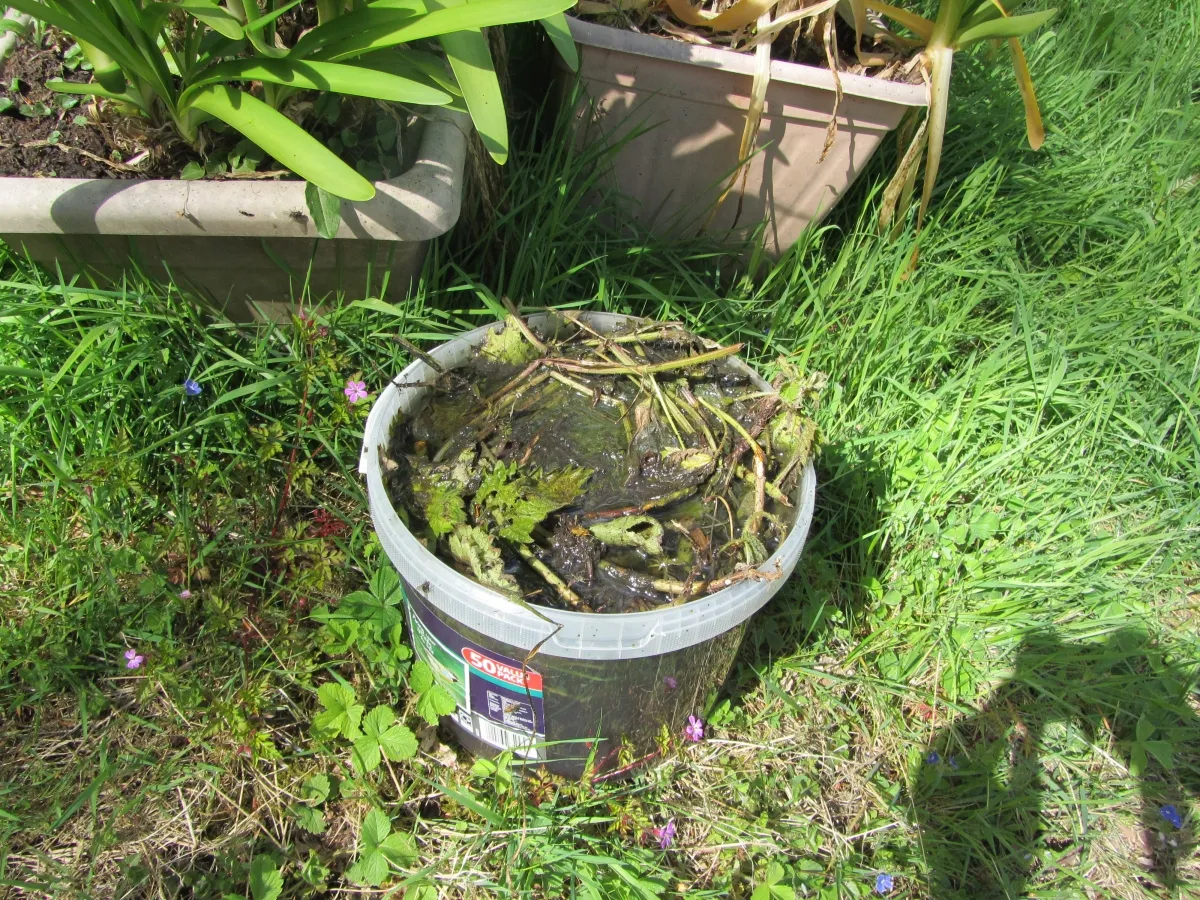
Nettles help keep fruit fresh
The leaves of nettle plants can, when used to pack fruit, help to keep it fresh and ripe, stopping mould from forming. Their high nitrogen content means they can also be used in compost, fuelling the bacteria to help them break down material more effectively and quickly.
Nettle fibres can be spun into yarn
The fibres in the nettle plant are similar to linen and can be spun into yarn; nettle fabric was used to make German uniforms during the First World War. Scientists at De Montfort University in Leicester have used nettle fabric to make dresses in the past. Nettle yarn was often used to make tablecloths and bed sheets in Scotland, and in Russia the juice from the plant has traditionally been used to create a green dye. A yellow dye comes from the roots.
Nettles are natural archaeologists
Nettles will grow just about anywhere, but they prefer rich soils and benefit from the waste humans produce. In this way, the presence of large collections of nettles in the wild can sometimes indicate where settlements once existed. The site may not longer be visible on the surface, but the nutrients in the rich soil still provide the perfect conditions for the nettles.
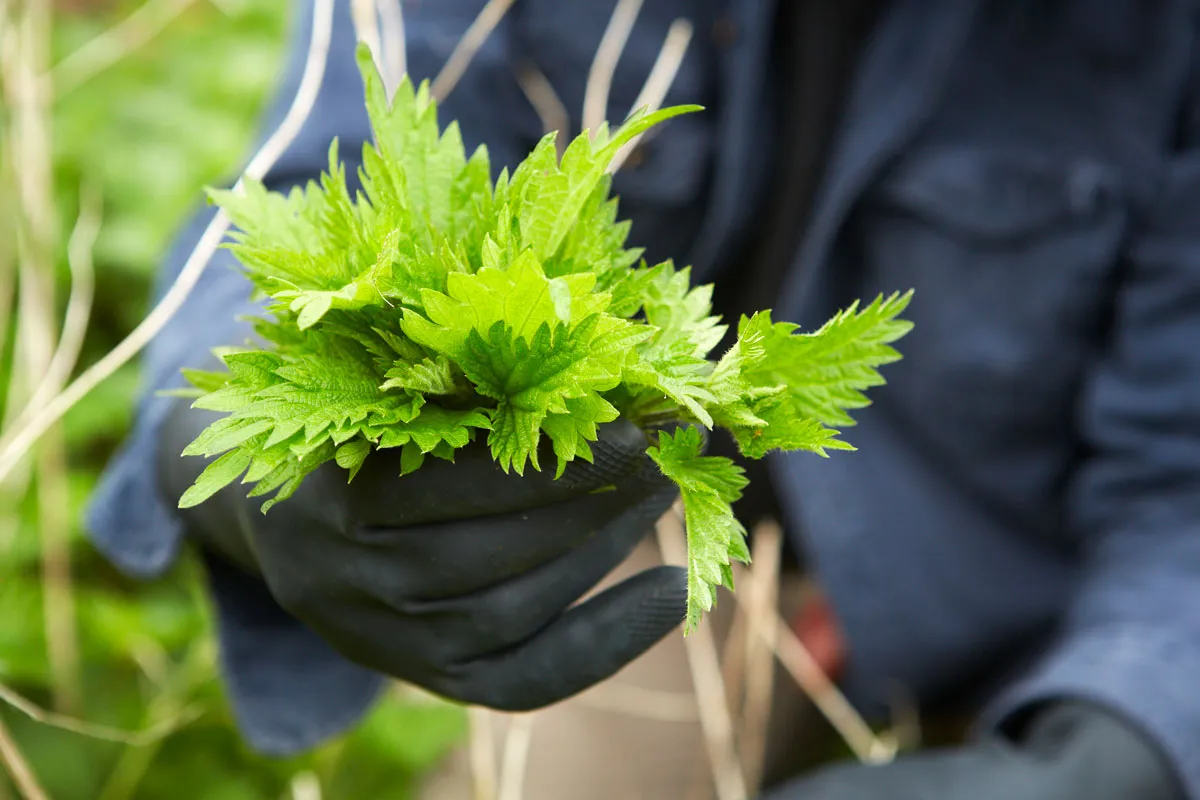
Nettle recipes
Easy nettle soup

This easy nettle soup recipe is perfect for a light lunch. Discover more delicious soup recipes, including French onion soup, leek and potato soup, and sorrel soup.
Wild garlic, nettle and dandelion tart

This springtime tart is made from foraged ingredients, including wild garlic, nettle and dandelion. Try out more recipes using wild garlic or dandelion, such as wild garlic, potato and chorizo tortilla, and wild garlic salt, or dandelion root coffee, dandelion wine, and dandelion syrup.
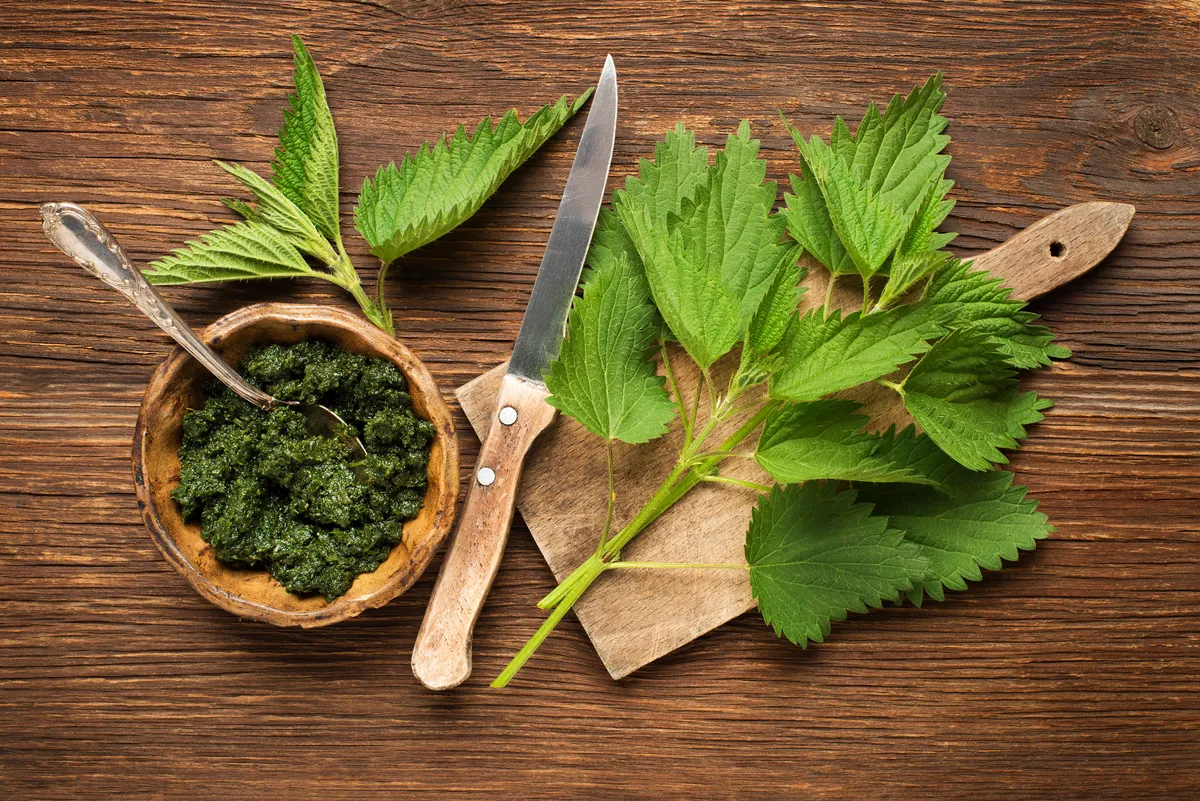
Making nettle pesto is simple; all you need to do is substiture cooked nettle leaves for the basil or baby spinach you would normally use. Have a go at these recipes for making pesto from wild garlic and carrot tops.
Crispy fried stinging nettles
Make these tasty crispy stinging nettles to serve as a side dish.

Chicken leg, blue cheese and nettle pie
Make a warming spring pie from freshly foraged nettles.

Nettle beer (on BBC Wildlife Magazine website)
Writer and wild brewer Pascal Baudar shares his recipe for making nettle beer.
